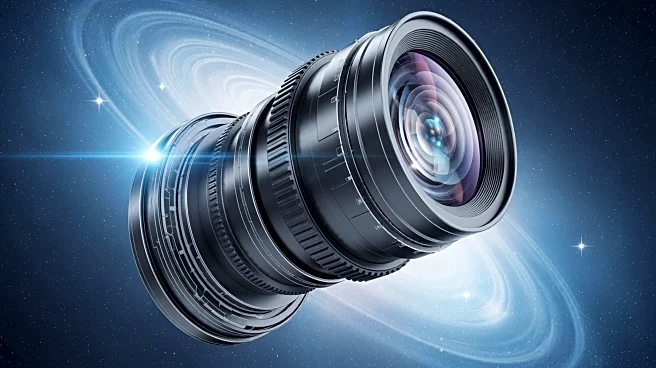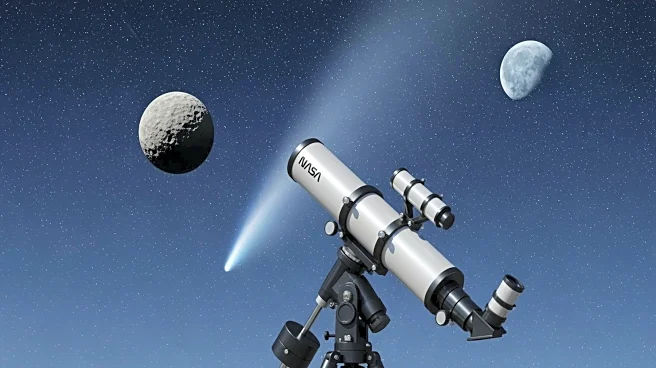What's Happening?
Scientists at Durham University are collaborating with a UK team to develop a high-resolution imaging camera for NASA's Habitable Worlds Observatory (HWO) mission. This mission aims to identify Earth-like planets and examine them for signs of life. The
camera, described by Prof Richard Massey as the '21st Century's Hubble Space Telescope,' will also observe asteroid collisions, black holes, and dark matter mysteries. The telescope will employ a coronagraph to block out star brightness, enabling the study of rocky planets like Earth. The UK hardware team, led by University College London, includes experts from the University of Portsmouth, RAL Space, the UK Astronomy Technology Centre, and Durham University. The project is funded by the UK Space Agency.
Why It's Important?
The development of this camera is significant as it represents a major advancement in space exploration technology. By enabling the study of Earth-like planets, the mission could potentially identify signs of extraterrestrial life, which would have profound implications for our understanding of life in the universe. Additionally, the ability to observe phenomena such as asteroid collisions and black holes could lead to new scientific discoveries and enhance our knowledge of the cosmos. The collaboration between UK institutions and NASA highlights the importance of international cooperation in advancing space exploration and technology.
What's Next?
NASA's Habitable Worlds Observatory mission is expected to launch in the early 2040s. As the project progresses, further developments in the camera's technology and capabilities are anticipated. The collaboration between UK institutions and NASA may lead to additional partnerships and projects in the field of space exploration. The scientific community and the public will likely follow the mission's progress closely, with potential discoveries sparking interest and debate about the existence of life beyond Earth.
Beyond the Headlines
The ethical implications of discovering extraterrestrial life could lead to discussions about humanity's role in the universe and our responsibilities towards other life forms. The technological advancements made through this project may also have applications beyond space exploration, potentially influencing fields such as imaging technology and data analysis. The mission's success could inspire future generations to pursue careers in science and technology, fostering innovation and exploration.













